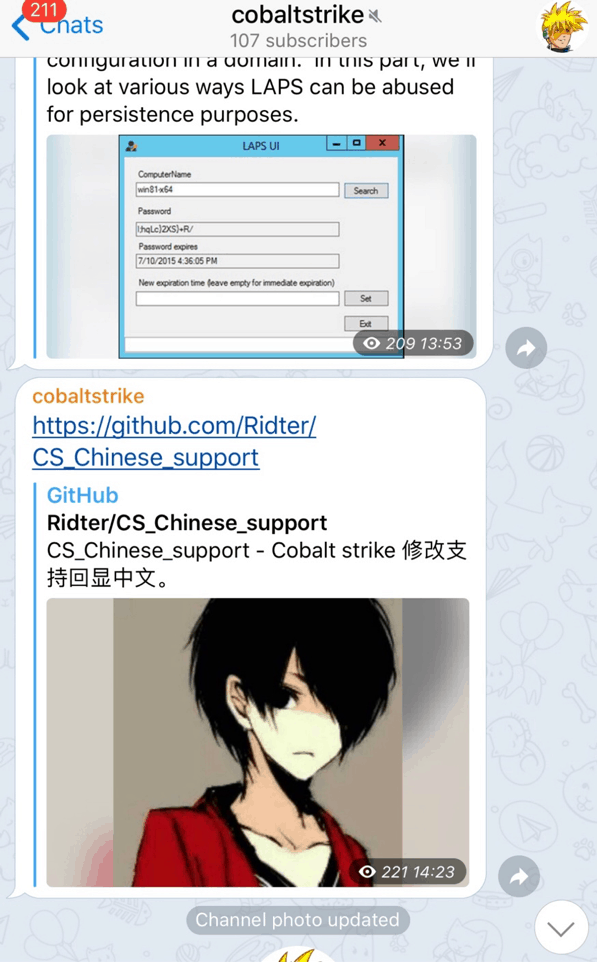

- #COBALT STRIKE BEACON PERSISTENCE HOW TO#
- #COBALT STRIKE BEACON PERSISTENCE SOFTWARE#
- #COBALT STRIKE BEACON PERSISTENCE DOWNLOAD#
They should also make sure all of the software is frequently updated. Cobalt Strike exploits network vulnerabilities, launches spear phishing campaigns, hosts web drive-by attacks, and generates malware infected files from a powerful graphical user interface that encourages collaboration and reports all activity. Strong passwords aside, users are also advised to keep the server behind a firewall, log everything, and keep both eyes out for suspicious actions. What is Cobalt Strike Raphael Mudge is the creator of Cobalt Strike (CS), around 2010 he released a tool titled Armitage, which is described by wikipedia as a graphical cyber-attack management for the Metasploit Project, to put this more bluntly, Armitage is a gui that allows you to easily navigate and use MSF. Avoid using numbers in sequence (123, 789), meaningful dates (birthdays, for example), or names that could be obtained through social engineering (street names, names of significant others, children, pets, etc.). The best way to remain secure is to keep a strong password, which includes a string of both uppercase and lowercase letters, numbers, as well as symbols.

#COBALT STRIKE BEACON PERSISTENCE DOWNLOAD#
While the name of the attacker(s) remains a mystery, AhnLab did say that all of the download URLs, as well as the C2 server URLs, used in these recent attacks, point to the same threat actor. > Log4Shell attacks are spreading fast after flaw exploited > Linux systems are being bombarded with ransomware and cryptojacking attacks Our detection opportunities from last year’s Threat Detection Report remain effective.> Patched Cobalt Strike vulnerabilities could have dealt a crippling blow to malicious users Discovery 6 Execution 7 Lateral Movement 8 Persistence 9 Privilege Escalation C CobaltStrike Beacon Simulation A Apply AV Exclusions in Registry S Settings E Exit Your selection (then press ENTER): C. External C2: This is a special type of listener that gives the option to 3rd party applications to act as a communication medium for beacon.

The security community has shared invaluable public resources on analyzing and detecting Cobalt Strike. Elastic Security engineers have documented a less tedious way to find network beaconing from Cobalt Strike. A useful example is to execute an exploit module from metasploit and gain a beacon session on cobalt strike. Keep in mind that although many of these methods of detection can be easily bypassed with changes to the Cobalt Strike configurations, we highly suggest using them as a stopgap until your teams develop more advanced methods. baselining the prevalence of reconnaissance commands.
There are only a few documented cases where it was used in an APT. Some of the more common detection strategies documented in public reporting include: Then a Cobalt Strike beacon is initialized, the Atera Agent is installed which is done to enable persistence and shell execution so that Cobalt Strike can survive detections. persistence and privilege escalation all at once. Luckily for defenders, over the course of this past year the security community has produced a plethora of great technical analysis and detection opportunities around preventing and investigating Cobalt Strike. The security community is embracing the fact that whatever functional label you place on Cobalt Strike, it’s here to stay, it’s implicated in all variety of intrusions, and it’s our duty to defend against it. Persistence via DLL Hijacking In order to ease up the process, the Red Team prepared a local environment, as close as possible to the original, to carry out the appropriate tests.
#COBALT STRIKE BEACON PERSISTENCE HOW TO#
Some of the most notorious ransomware operators- including groups like Conti, Ryuk, and REvil/Sodinokibi-are known to rely heavily on Cobalt Strike in their attacks. Word documents with malicious macros downloading Cobalt Strike payloads Fake Flash Installer delivering Cobalt Strike Beacon. Finally, it details how to mimic legitimate Microsoft Teams traffic when communicating with the C&C using Cobalt Strike malleable C2 profiles. Its speed, flexibility, and advanced features are likely contributing factors as to why ransomware attacks have been ticking upward in recent years. The beacons often show up as service persistence during incidents or during other post-exploitation activity. This particular beacon is representative of most PowerShell Cobalt Strike activity I see in the wild during my day job. Adversaries-ransomware operators in particular-rely substantially on Cobalt Strike’s core functionalities as they seek to deepen their foothold in their victims’ environments. In this post I want to take a look at a PowerShell-based Cobalt Strike beacon that appeared on MalwareBazaar. Cobalt Strike has never been more popular, as adversaries are increasingly adopting it as their favorite C2 tool.


 0 kommentar(er)
0 kommentar(er)
